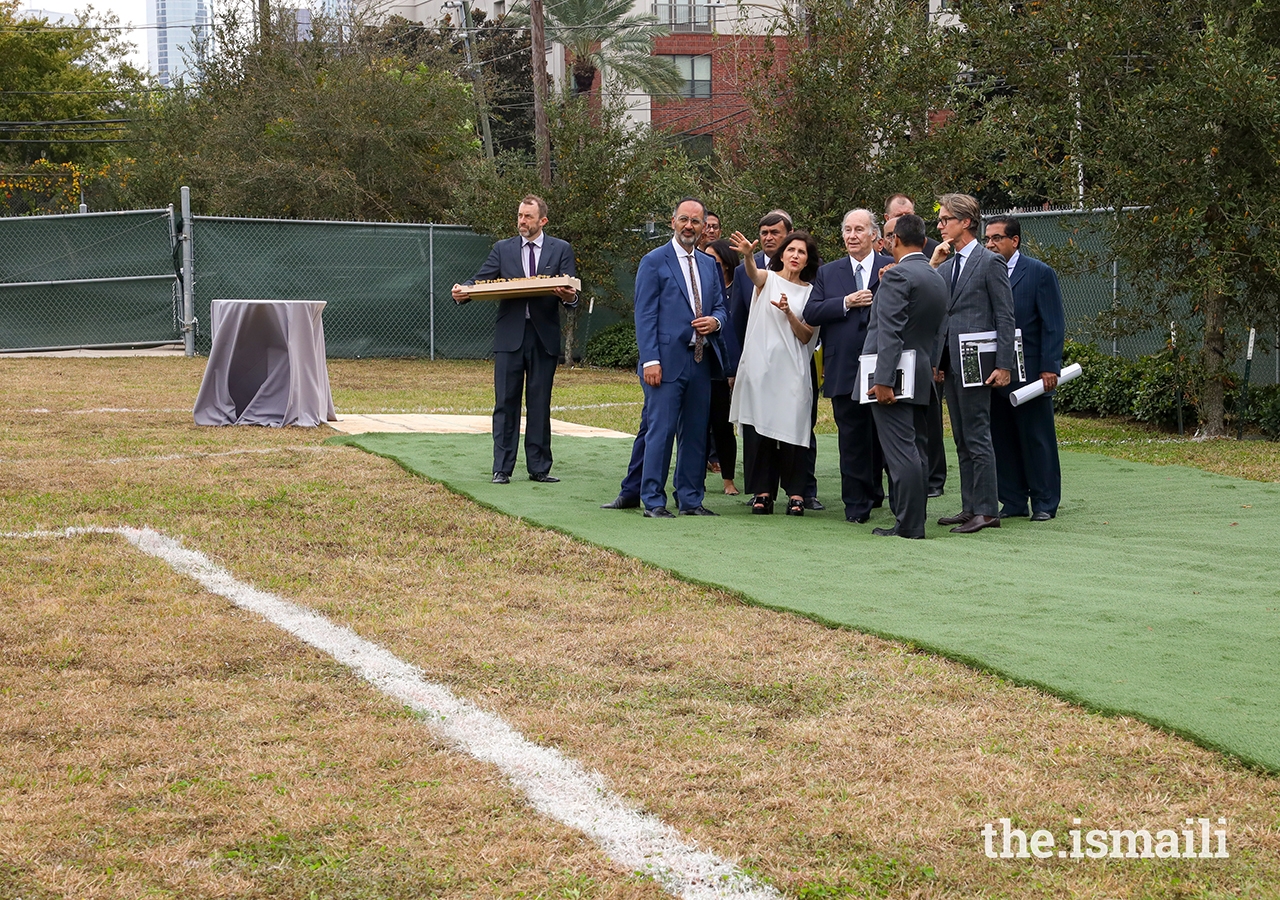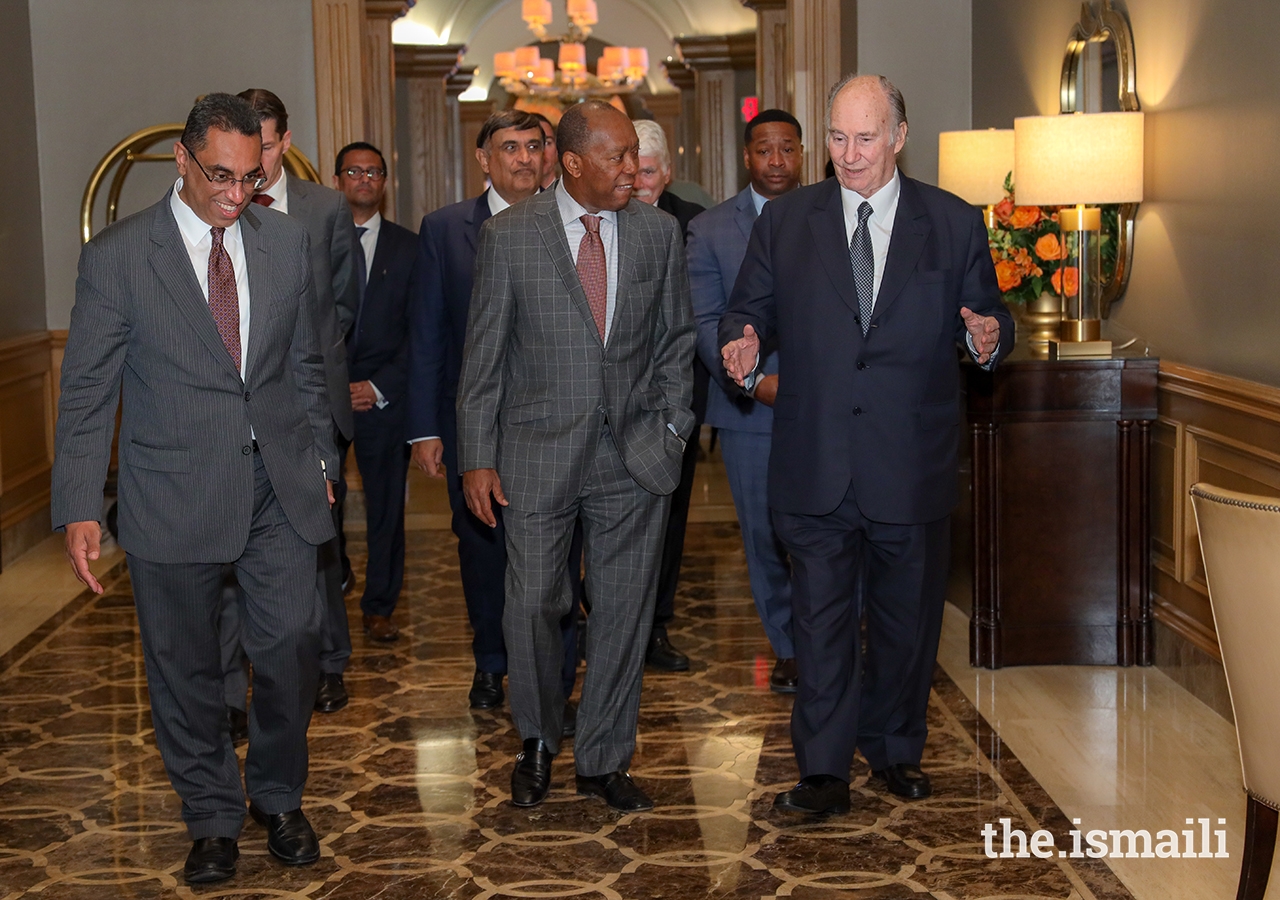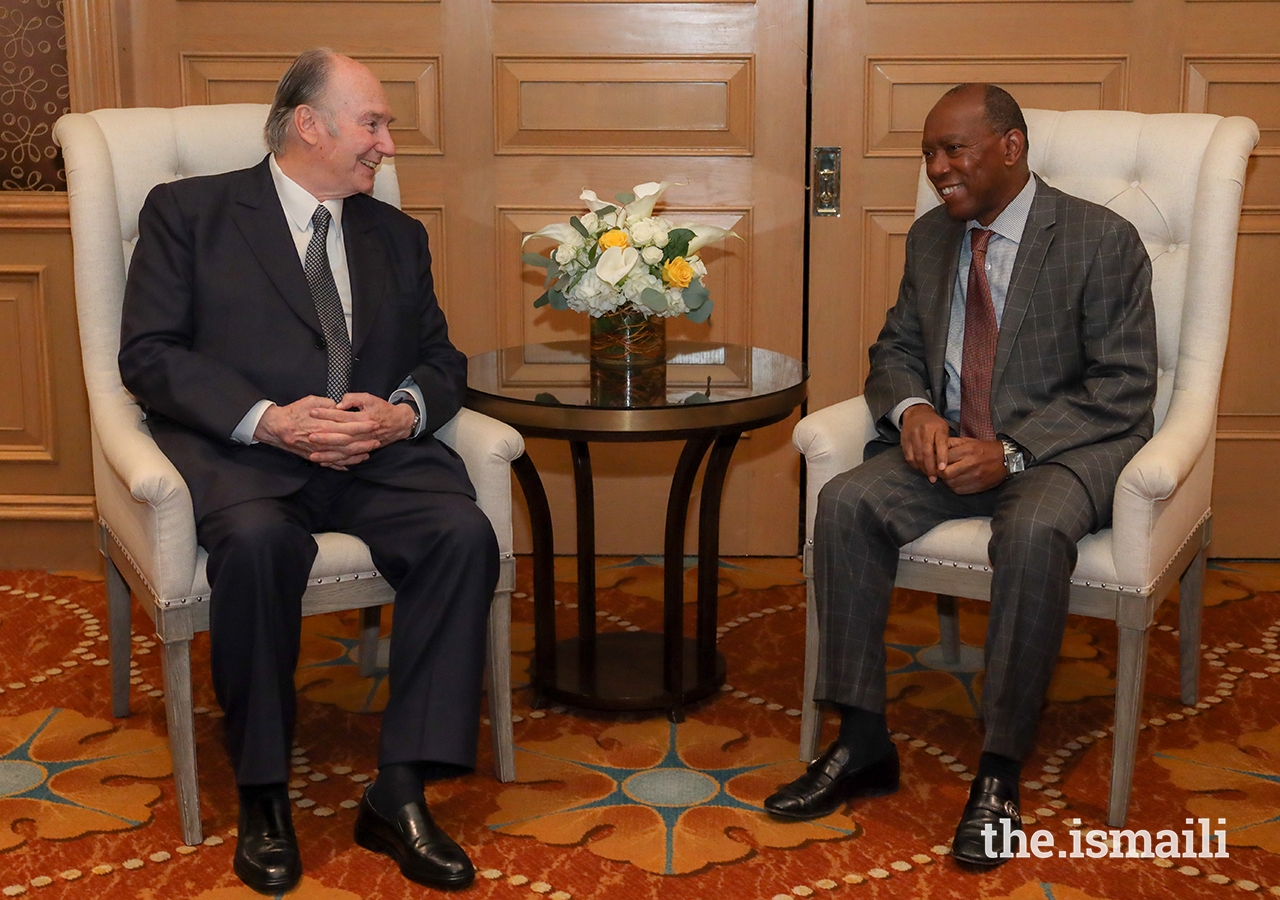The Ismaili Center Houston will be the seventh Center, joining others in London, Vancouver, Lisbon, Dubai, Dushanbe, and Toronto. Ismaili Centers serve to reflect, illustrate and represent the Ismaili community’s intellectual and spiritual understanding of Islam, its social conscience, its organization, its discipline, its forward outlook, and its positive attitude towards the societies in which it lives. They are symbolic markers of the permanent presence of the Ismaili community, and are a symbol of the confluence between the spiritual and the secular in Islam.
During Mawlana Hazar Imam’s Diamond Jubilee visit to the United States in March 2018, he graciously confirmed his intent to build the Ismaili Center Houston. In February of this year, another milestone announcement was made confirming Farshid Moussavi as the building architect and Thomas Woltz as the landscape architect, both of whom joined Hazar Imam for the site tour this week.
Earlier this year, Mayor Turner said, “The Ismaili Center will be a place where Houstonians of all backgrounds, faiths, and walks of life will find engaging, thoughtful, and compassionate programs, and people. That will be in keeping with Ismaili values and the values of the Ismaili leader, the Aga Khan, who last visited Houston in March 2018. It’s fitting that the Center will be designed by a world-renowned architect who has lived, studied and worked around the world, and that the green space will be designed by a landscape architect who has already worked on a major Houston park.”
President of the Ismaili Council for the United States, Al-Karim Alidina, said, “We are most grateful for Hazar Imam’s visit to progress this milestone project. We hope that the Ismaili Center Houston will be a marker of the permanency of the US Jamat, a bridge to civil society and a symbol of hope and pluralism.”












